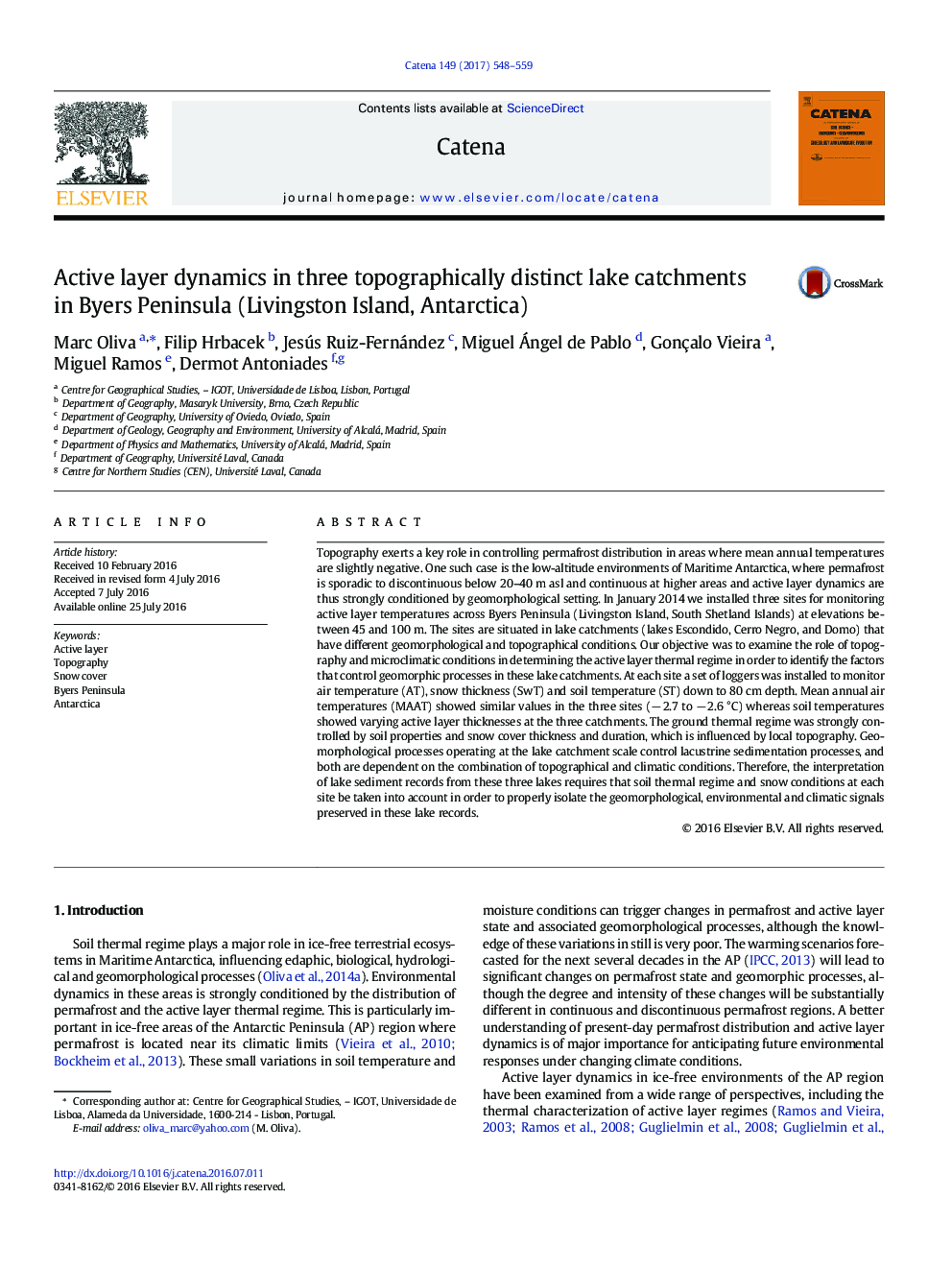| کد مقاله | کد نشریه | سال انتشار | مقاله انگلیسی | نسخه تمام متن |
|---|---|---|---|---|
| 5770087 | 1413271 | 2017 | 12 صفحه PDF | دانلود رایگان |

- We focus on the active layer dynamics of three sites in Maritime Antarctica.
- We examine air and active layer temperatures and snow thickness at each site.
- Active layer regime depended on snow conditions, which were influenced by topography.
- These factors condition geomorphological processes at the lake catchment scale.
- Lake sediments record geomorphologic, environmental and climatic signals.
Topography exerts a key role in controlling permafrost distribution in areas where mean annual temperatures are slightly negative. One such case is the low-altitude environments of Maritime Antarctica, where permafrost is sporadic to discontinuous below 20-40 m asl and continuous at higher areas and active layer dynamics are thus strongly conditioned by geomorphological setting. In January 2014 we installed three sites for monitoring active layer temperatures across Byers Peninsula (Livingston Island, South Shetland Islands) at elevations between 45 and 100 m. The sites are situated in lake catchments (lakes Escondido, Cerro Negro, and Domo) that have different geomorphological and topographical conditions. Our objective was to examine the role of topography and microclimatic conditions in determining the active layer thermal regime in order to identify the factors that control geomorphic processes in these lake catchments. At each site a set of loggers was installed to monitor air temperature (AT), snow thickness (SwT) and soil temperature (ST) down to 80 cm depth. Mean annual air temperatures (MAAT) showed similar values in the three sites (â 2.7 to â 2.6 °C) whereas soil temperatures showed varying active layer thicknesses at the three catchments. The ground thermal regime was strongly controlled by soil properties and snow cover thickness and duration, which is influenced by local topography. Geomorphological processes operating at the lake catchment scale control lacustrine sedimentation processes, and both are dependent on the combination of topographical and climatic conditions. Therefore, the interpretation of lake sediment records from these three lakes requires that soil thermal regime and snow conditions at each site be taken into account in order to properly isolate the geomorphological, environmental and climatic signals preserved in these lake records.
Journal: CATENA - Volume 149, Part 2, February 2017, Pages 548-559